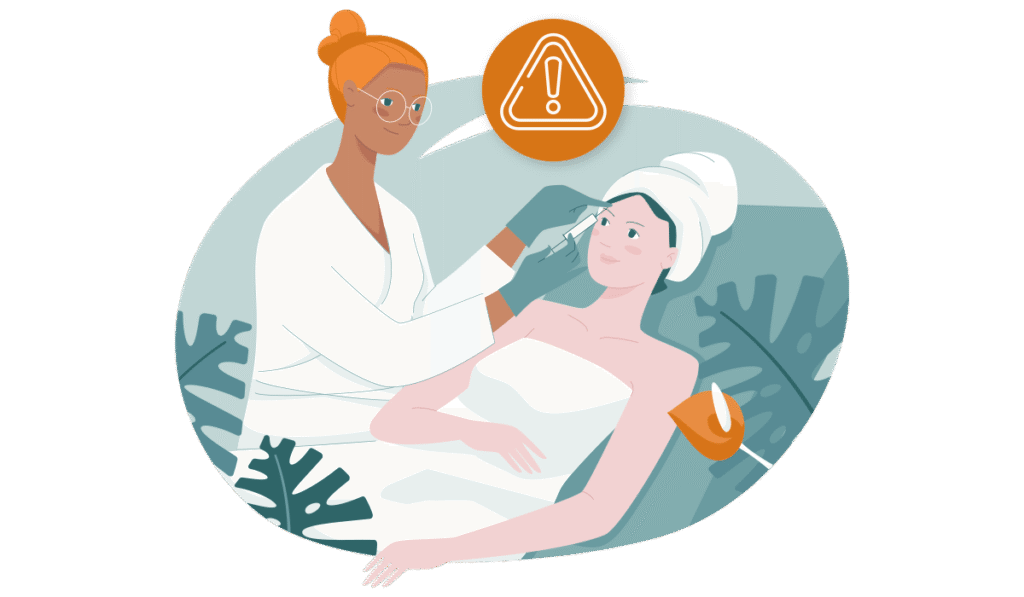Staying Safe from Fake GLP-1s and Rogue Med Spas
November 12, 2025

Fraudulent drugs are a major safety issue affecting the United States medication supply chain, potentially exposing patients to dangerous substances. Although the US supply chain remains one of the safest in the world, falsified, unapproved, and unsafe drugs still make their way into legitimate pharmacies and medical facilities. In recent years, widely unregulated med spas have become particularly susceptible to fraudulent drugs, potentially endangering patients.
What are Med Spas?
Medical spas, or “med spas” as they are commonly referred to, are facilities that provide spa-like dermatological treatments such as facials, chemical peels, and laser hair removal, while also providing prescription injection treatments like Botox, fillers, and more recently, GLP-1 agonists for weight management. Although the services at med spas frequently involve prescription medications and medical treatments, they often lack physicians on-site.
Med spas are not highly regulated by state or federal bodies. Ohio is currently the only state that requires med spas to obtain licensure with the state board of pharmacy.
Unapproved Substances and Unlicensed Sellers
The fraudulent drugs we are discussing can be one of 2 things: unapproved substances or substances sold by unlicensed sellers. Unapproved substances are substances that have not been approved for sale by US Food and Drug Administration (FDA). This can include counterfeit drugs, illegally compounded drugs, or new substances that have not yet been tested. For example, regulators have seen versions of GLP-1s sold online that are meant for research purposes only and are not safe for human use. In some instances, compounding pharmacies or illegally operating non-pharmacy compounders may be purchasing these drugs intended only for research and then selling the compounded versions to med spas.
Alternatively, illegally operating, unlicensed sellers may be repackaging falsified drugs to look legitimate. For example, in 2024 a woman in Tennessee was accused of selling fake versions of GLP-1s and impersonating a licensed wholesaler. She was providing 2 med spas in her area with GLP-1s. In this case, she was repackaging drugs that should be sterile in a non-sterile environment. The drugs could contain unapproved substances, contaminated substances, or no active ingredients at all. Contaminated or fake medication can lead to illness, infection, and even death.
How Are Consumers Obtaining Illicit GLP-1s?
Although many med spas operate safely and compliantly, there are bad actors in the med spa space who are intentionally ordering falsified drugs and unapproved substances, like research-use-only GLP-1s. These research-use-only GLP-1s are not approved for compounding or consumption. This makes med spas one pathway through which consumers are unintentionally obtaining illicit GLP-1s.
Consumers are also finding illicit GLP-1s listed online. Individuals use message board websites to discuss their illicit GLP-1 purchases and let others know where to find the fake drugs online. Oftentimes, these consumers are aware that ordering the drugs online this way is illegal but don’t realize how dangerous the drugs might be.
How Are Illicit GLP-1s Entering the US?
Illicit GLP-1s are mainly entering the US in small, person-to-person packages or as individual active pharmaceutical ingredients (APIs) that are then illegally compounded in the states. Person-to-person “de minimis” (tax-free) packages are a common method for individuals to order illicit GLP-1s. As long as the product is under $800 USD, de minimis packages clear customs with minimal paperwork and inspection. Individuals can order online as easily as they would order foreign goods from marketplaces like Amazon and have the illicit GLP-1s sent directly to them.
Illegal compounders are ordering APIs that may be falsified and the sellers are shipping them via freight. Shipping illicit APIs via freight involves committing “code fraud,” meaning that they label the products incorrectly on the freight manifest. Falsified APIs will often be labeled as antibiotics, as they are considered lower risk than other drugs.
Although FDA’s efforts protect the public from falsified drugs like GLP-1s, unfortunately, the agency does not have the resources to prevent all falsified medications from entering the US. 1.3 billion de minimis packages enter the US every year — that’s over 3.5 million per day. Between September 2023 and January 2025, 2,465 bulk API shipments arrived at the US border, 239 of which were GLP-1s. 195 of those were allowed to enter despite clear legal issues.
From September 2023 to January 2025
2,465
Bulk API shipments arrived at the border
239
Bulk GLP-1 shipments
195
Entered the US despite clear legal issues
How To Stay Safe From Fake GLP-1s
Make sure you understand the dangers of fake GLP-1s. Never buy medication online without a prescription, and look out for the red flags of illegal online pharmacies. If you find a deal that’s too good to be true, it probably is. Use our Safe Site Search Tool to make sure that your online pharmacy is legitimate.
Not all med spas are unsafe, but you should choose your med spa wisely and do thorough research. The American Med Spa Association has information on their website about how to look for a safe med spa. Ohio Board of Pharmacy has also created a resource for med spa safety, and the Partnership for Safe Medicine has patient resources on their website about purchasing medicines only from legitimate sources. Use these resources and share widely with your loved ones and community to stay safe from fake GLP-1s.